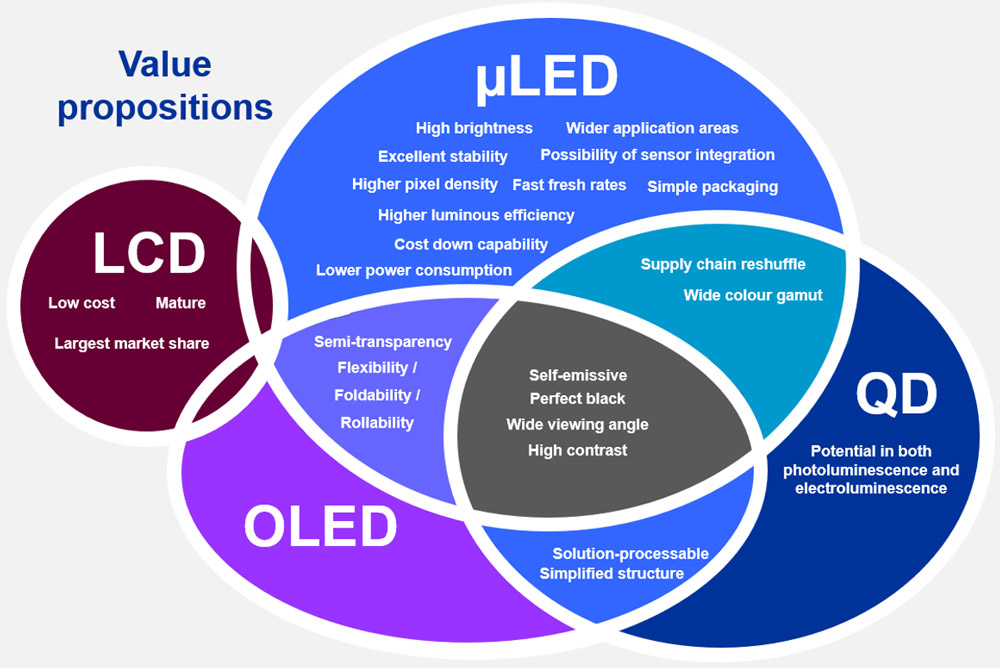News: Markets
10 November 2020
Micro-LEDs lighting way for display technologies?
Micro-LED technology has been garnering interest for several years now, particularly since 2014 when Apple purchased the micro-LED-focused start-up LuxeVue. The implication that leading tech firms were racing to incorporate micro-LEDs into their highly desirable consumer tech prompted a flurry of speculation that micro-LEDs would be the ‘next big thing’ in TVs, smartphones, wearables and much more.
That hasn’t happened – yet. But in the past few years the likes of Sony, LG and Samsung have demonstrated large-scale micro-LED screens, while other firms have brought various micro-LED prototypes to market, and still more have expressed plans to do so.
But the question of whether, and how, it will become the natural replacement for other LED technologies – including the currently dominant LCD and OLED – is somewhat complex.

Figure: Value propositions of various display technologies.
In the new study ‘Micro-LED Displays 2020–2030: Technology, Commercialization, Opportunity, Market and Players’, market research firm IDTechEx reveals how gaps in the current supply chain and manufacturing capabilities may on one level be seen as hindering progress but are, simultaneously, generating great opportunity.
What is micro-LED?
Micro-LEDs act as pixels and are thus described as self-emitting. They use much smaller LED chips than their predecessors. There is no formally agreed definition, but generally a micro-LED chip is less than 100μm (i.e. an LED emission area per pixel below 100μm x 100μm).
The size and nature of micro-LEDs convey several advantages when used in display screens. Their color gamut is superb, with perfect blacks and brightness above 1 million nits. A micro-LED screen can be exceptionally thin, with resolution as high as 6000PPI (pixels per inch), and has a wide viewing angle. Micro-LED screens also have a long lifespan, can be flexible and/or transparent, and can incorporate sensor technologies (such as biometric sensors to unlock the screen in a smartphone display).
Furthermore, unlike traditional LED screens which are huge and visibly lose resolution as the viewer gets closer, micro-LED displays retain their sharpness regardless. In addition, they can be used in a wide range of screen sizes (i.e. they are eminently scalable). Figure 1 illustrates the capabilities of micro-LED displays vis-à-vis other display technologies.
But, given this situation, why are micro-LED displays not ubiquitous?
Why the wait for micro-LED?
As an emerging technology in the early stages of maturity, micro-LED displays are currently expensive and hard to make. For this to improve, and for the potential cost savings and efficiency gains of micro-LED to be fully realized, innovation and evolution of various techniques is required.
For example, processes that would scale up manufacturing would be advantageous to the market. So would better chip transfer, repair, inspection and light management techniques.
Meeting such challenges need not be particularly complex or risky: many components are based on existing and mature manufacturing processes. Thus, it may be seen as an opportunity open to many firms in relevant fields. If micro-LED manufacturing can be improved, a world of applications and thus, commercial potential, will open up, reckons IDTechEx.









